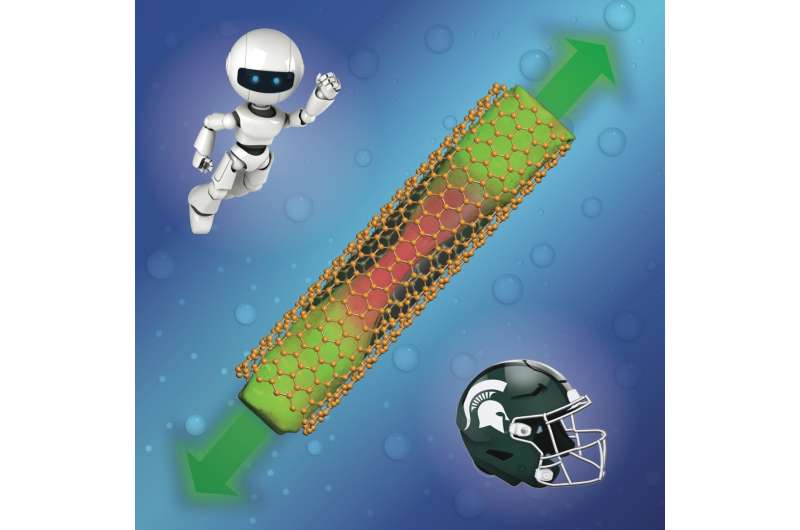New discovery supports reusable helmet padding

While developing a reusable liquid nanofoam material for football helmets, Michigan State University researchers have made a big discovery that puts the material that much closer to practical use in a variety of applications.
Weiyi Lu, an associate professor in the Department of Civil and Environmental Engineering, and his research associate, Mingzhe Li, found that liquid flowing into a nanopore acts more like a solid. The liquid pulls itself apart like stretching a piece of saltwater taffy creating a thin "neck" in the center of the nanopore that eventually breaks, causing the liquid to flow out of opposite ends of the nanopore.
This discovery will have a significant impact on the prototype design of liquid nanopore pads that aim to be more effective and resilient than foam pads.
"From previous research, we knew how the liquid flowed into the nanopores and now, we know how it flows out," Lu said. "Our laboratory testing and the simulation work of Baoxing Xu, an associate professor at the University of Virginia, and Yuan Gao, a postdoctoral scholar at University of Illinois at Urbana–Champaign, helped make this important discovery
The new finding means the liquid nanopore material can meet the goal of being reusable, flexible and more comfortable. Future liquid nanofoam devices can have potential applications off the football field, in cars and wearable devices to monitor health conditions.
The research was published on Dec. 15 in the journal Matter.
More information: Yuan Gao et al, Anomalous solid-like necking of confined water outflow in hydrophobic nanopores, Matter (2021).
Journal information: Matter
Provided by Michigan State University




















